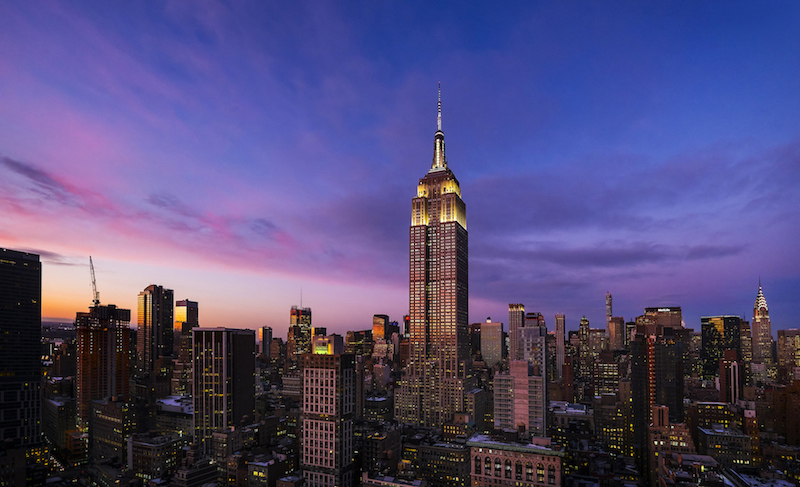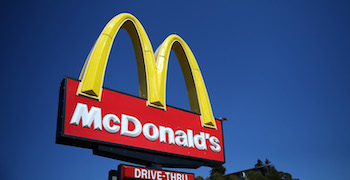In the late-1920s, New York’s economy was booming and a competition to build the world’s tallest building was heating up. One man who was at the center of it all was Walter Chrysler of the Chrysler Corporation, who wanted to build the world’s tallest building as a monument to himself and American capitalism. Chrysler began construction of his monument, the Chrysler Building in 1928 at 405 Lexington Avenue. Despite the buildings name, the Chrysler Corporation did not pay for the construction of the building and never owned it. Instead Chrysler paid for it himself, with the hope of his children one day inheriting the world’s tallest building.
The architects of a competing building, 40 Wall Street, had devised a plan to prevent the Chrysler Building from ever becoming the world’s tallest building. Seeking the title for themselves, they planned 40 Wall Street to be 925 feet tall: 85 feet taller than the Chrysler Building had originally planned to be. When Chrysler found out about 40 Wall Street’s plans he decided to add a surprise 186-foot spire to his building. 40 Wall Street finished construction first in April of 1930, and held a celebration for being the tallest building in the world, without knowing that they were about to be surpassed. Less then two months later, the construction workers at the Chrysler Building hoisted 4 parts of the secret spire to the top and riveted them together in 90 minutes. At 1,046 feet high, the Chrysler Building became the world's tallest building¹.

John J. Raskob of General Motors, a rival of Chryslers, also aspired to build the world’s tallest building. Raskob purchased 350 Fifth Avenue and began construction of the Empire State Building in March of 1930, only a few months before the Chrysler Building was completed. Raskob hired architect William F. Lamb, who finished the original drawings for the Empire State Building in only two weeks. In one of their first meetings Raskob had taken a jumbo pencil, stood it on its end and asked Lamb, "Bill, how high can you make it so that it won't fall down?" Using over 3,400 laborers a day, the building went up in just over a year, well ahead of schedule and under budget at $40 million, which would be nearly $600 million today. During certain periods of construction, the frame grew a remarkable four-and-a-half stories a week. Not to be bested by the Chrysler Building, Raskob put the final cherry at the top of his building - a spire, making the Empire State Building a soaring 102 stories and 1,250 feet high. The Empire State Building was completed in May of 1931 and became the world’s tallest building, a title it would hold for nearly 40 years until the World Trade Center was completed in 1970. While successful in beating the Chrysler Building in height, the Empire State Building was far from being the success Raskob had hoped.
The Empire State Building was stymied from the start due to the onset of the Great Depression a few years prior. The Great Depression brought the United States economy to it’s knees. The stock market collapsed, nearly half of the US banks had failed, and at its height unemployment sat at 25% with over 13 million Americans looking for work. In only three years the average income of American families plummeted by 40%. While the Empire State Building gave New York City a sense of pride which it desperately needed, it also contributed to Manhattan’s 92% increase of inventory for office space during the Great Depression².
One year after it’s opening, the Empire State Building had an occupancy of only 25% and remained that way for most of the 30’s, earning it the nickname the “Empty State Building.” At times, workers were told to turn on lights on the higher floors to create the illusion that they were occupied³. Finding tenants for the building was harder than expected. In addition to the obstacles created by the Great Depression, vacancies were worsened by the buildings relatively long distance from public transportation hubs in the city, such as Grand Central Terminal, Penn Station, and the Port Authority Bus Terminal. Successful buildings, such as the Chrysler Building, did not have this problem⁴. The Empire State Building did not become profitable for nearly 20 years until after World War II when companies flooded Manhattan and space became scarce⁵.

Image of The Empire State Building, photo by Tetra Images/Getty Images
In 1951 the Empire State Building was sold to Roger L. Stevens and his business partners for a staggering $51 million. At the time, that was the highest price ever paid for a single building in real estate history⁶.
In 2013, the owners of the Empire State Building combined it with multiple other properties to become a public REIT under the name the Empire State Realty Trust. The REIT is required to file annual financials, allowing us to see how much the Empire State Building makes from each of it’s different revenue streams. With the Empire State Building offering 2.7 million square feet for lease, most people would think it’s largest source of revenue would be from it’s office space - that would be incorrect. While the Empire State Building’s office space generated $104 million in revenue, it’s Observation Decks generated a whopping $111 million. In addition, the building generated $20 million from licensing the use of it’s broadcasting mast to television and radio broadcasters, and generated $9 million from the buildings retail space⁷.
The competition between Walter Chrysler, John J. Raskob, and the team behind 40 Wall Street to see who could build the world’s tallest building pushed the status quo forward. Competition pressures us to be the best we can, to face our fears and step outside of our comfort zone allowing us to unlock our full potential. Competition has driven the human race forward since the dawn of time. Whether it was Michelangelo vs. Leonardo da Vinci who inspired millions with their art, Nikola Tesla vs. Thomas Edison who feuded over whose electricity would power the world or the United States vs. the Soviet Union’s race to see who could be the first to put a man on the moon. Without competition we are idle and stagnant, we don’t dream as big or fight as relentlessly. While the Chrysler Building and 40 Wall Street may not have held the title of world’s tallest building for as long as its builders may have hoped, they without a doubt succeeded in shaping history. Even though the Empire State Building was a financial flop for nearly its first 20 years, it is undoubtedly one of the world’s most famous buildings. We should not fear competition. We should embrace it. We should shoot for the stars – just like they did.
Sources
1James Maher, Chrysler Building History and Photography, www.jamesmaherphotography.com
2Barbara Thau, Great Depression echo, www.therealdeal.com
3Evan Andrews, 10 Surprising Facts About the Empire State Building, www.history.com
4Michael Sandberg, Architecture: The Empire State Building, www.datavizblog.com
5Evan Andrews, 10 Surprising Facts About the Empire State Building, www.history.com
7John Maxfield, How the Empire State Building Makes Money (In One Chart), www.fool.com




